#Peony Head (牡丹头)
Explore tagged Tumblr posts
Photo
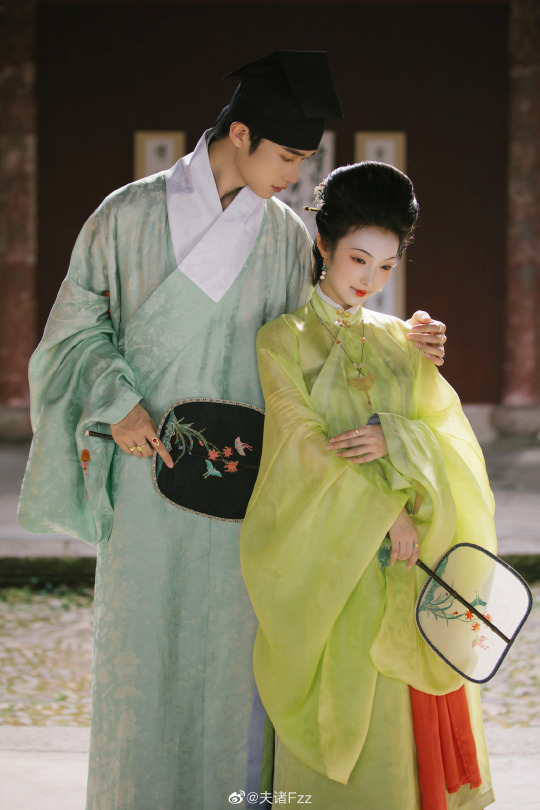

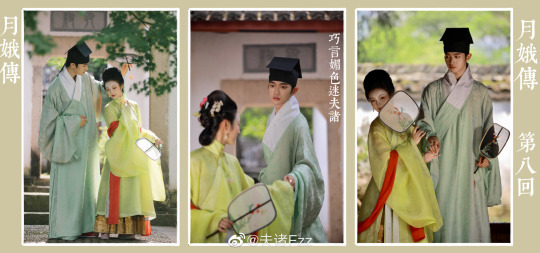
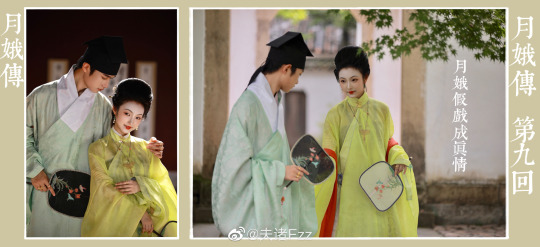

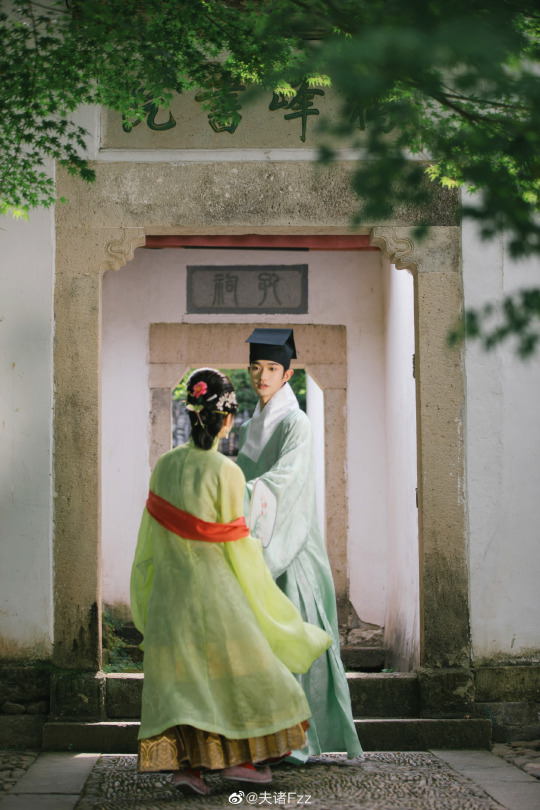





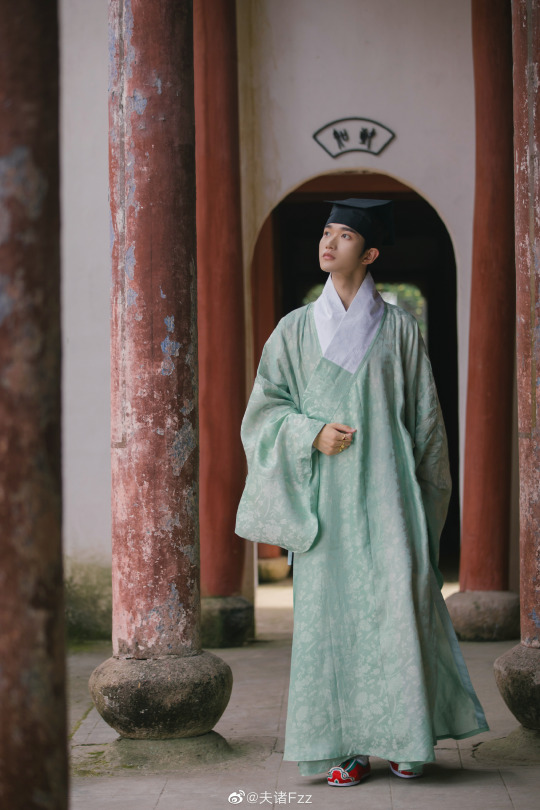
【Reference Artifacts】:
・ Ming Dynasty Woodblock Print Painting: showing woman in Hairstyle ”Peony Head (牡丹头)”

・Ming Dynasty Woodblock Print Painting:Late Ming woman hanfu
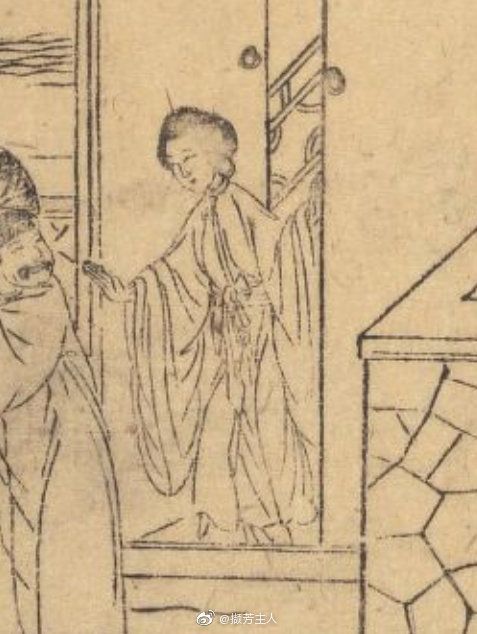
・Ming Dynasty Portrait

[Hanfu · 漢服]China Ming Dynasty Chinese Traditional Clothing Hanfu Photoshoots Based On Ming Dynasty Painting & Portrait 「月娥假戏成真情」
_______
📸Photo: @镧商商商
👗Hanfu: @YUNJIN云今
🧚🏻 Model: @陈喜悦耶 & @夫诸Fzz
💄 Makeup:@嘿那个谁--夙夕
🔗Weibo:https://weibo.com/3994523048/M1zuFhP5F
_______
#chinese hanfu#hanfu#Ming Dynasty#Late Ming Period#hanfu_challenge#Hanfu Cultural#hanfu accessories#hanfu history#chinese traditional clothing#chinese#chinese culture#chinese historical fashion#historical costuming#historical clothing#hanfu girl#hanfu man#hanfu from china#Ming Dynasty Woodblock Print Painting#Peony Head (牡丹头)#Ming Dynasty Portrait#月娥假戏成真情#镧商商商#YUNJIN云今#chinese hairstyle#陈喜悦耶#夫诸Fzz#嘿那个谁--夙夕#漢服#汉服#中華風
111 notes
·
View notes
Text
Peony Garden in UenoToshogu 上野東照宮ぼたん苑 上野东照宫牡丹苑
Though it's so cold outside there is a good place for flower lovers. In Tokyo, there is a garden of peony and now it's winter peony's show time. Follow us and have a look!
The peony originates from China. Since ancient times, it has been known as the “King of the Hundred Flowers”, so widely familiar with medical and ornamental plants. It is also called the “noble and wealthy” flower, and attracts widespread popularity as a blessed flower that brings people wealth, prosperity, fame and fortune. It is said that the peony was introduced to Japan during the Nara period. Then, it was cultivated mainly at the imperial court and temples. However, it was the Edo period that various types were produced, when the gardening culture was just commonalized among the ordinary people. The peony’s popularity is clear with many references in Japanese haiku and common uses as a motif in art, patterns and family emblems. 牡丹の花は「富貴」の象徴とされ、「富貴花」「百花の王」などと呼ばれています。 日本には奈良時代に中国から薬用植物として伝えられたとされ、江戸時代以降、栽培が盛んになり数多くの牡丹の品種が作り出されました。 中国文学では盛唐(8世紀初頭)以後、詩歌に盛んに詠われるようになり、日本文学でも季語として多くの俳句に詠まれ、絵画や文様、家紋としても親しまれてきた花です。 牡丹花作为富贵的象征,也被叫作富贵花和百花之王。 牡丹花在奈良时代作为药物的一种从中国传入日本。江户时代之后,牡丹的种植量渐渐增加,品种也丰富了不少。 中国的盛唐时期(公元八世纪初),各种赞颂牡丹的诗歌广为流传;在日本,牡丹也被包含许多季节特色语句的俳句和绘画所赞颂,同时也被当作纹样和家徽。 Peony Garden was founded in April 1980 to mark the Japan-China friendship. Now it has above 500 kinds of peonies from China, America and France. 上野東照宮ぼたん苑は、1980年(昭和55年)に日中友好を記念して開苑致しました。現在は、中国牡丹、アメリカ品種、フランス品種を含め500株以上の牡丹があでやかに咲き誇ります。 上野东照宫的牡丹苑是1980年为了纪念中日友好而开设的,现在拥有中国、美国、法国各品种的牡丹500株以上。 Winter peony is famous because it’s rare. Especially the “Lion Head”, which is 350 years old and “Peas’Green”, as beautiful as fairytale. From mid-April you can enjoy the “Spring Peony Festival” but in January, it’s winter peony’s time. 冬ボタンなどの珍品種が植えられていることで名高い。特に樹���約350年の「獅子頭」や,中国でも幻のボタンと呼ばれる「豆緑」が話題をよんでいる。春、4月中旬「春のぼたん祭り」、1月からは「寒牡丹」を楽しむ事ができる。 冬天盛开的牡丹十分稀有,名声远播。尤其是树龄约350年的狮子头和在中国也被称为梦之牡丹的豆绿。四月中旬有在春天举办的“春日牡丹节”,而一月则可以尽情欣赏这些在严寒中盛开的牡丹。 Ueno has beautiful natural scene though it settles in the center of Tokyo city. Please come and enjoy the Peony there. 東京都心にありながら緑豊かな上野で、どうぞごゆっくりと牡丹をご鑑賞ください。 请到尽管坐落在东京都的中心却仍然拥有盎然绿意的上野来观赏牡丹吧。
0 notes
Photo
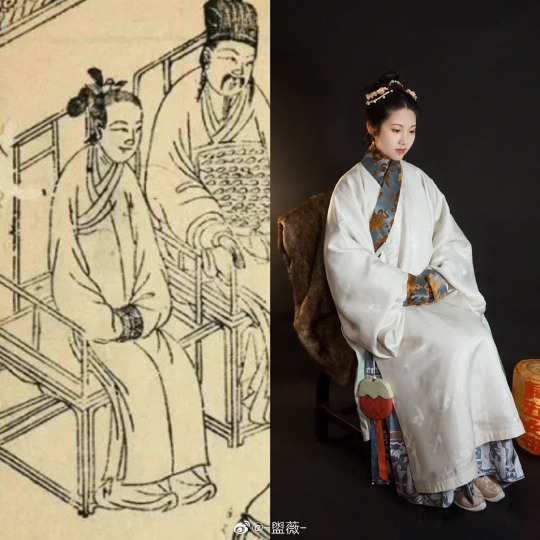

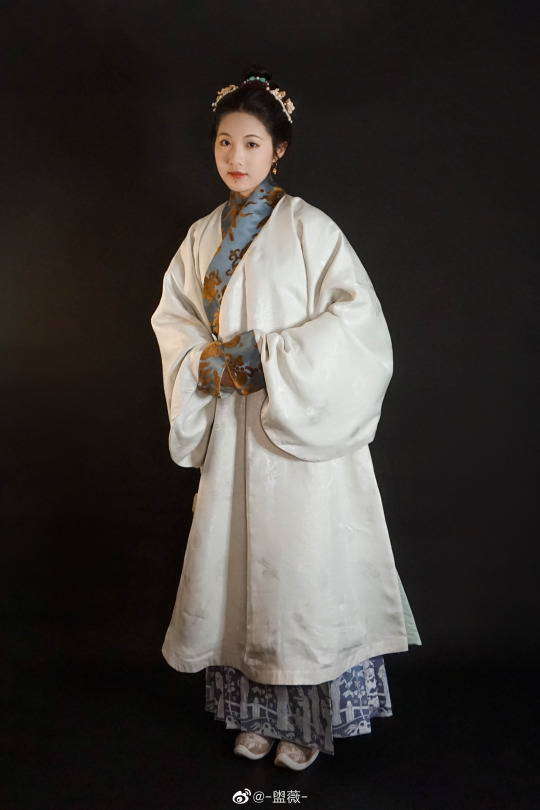
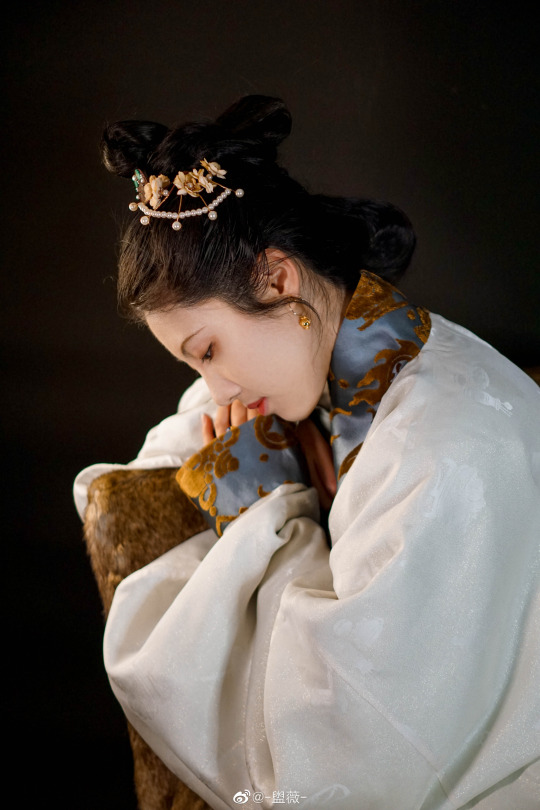

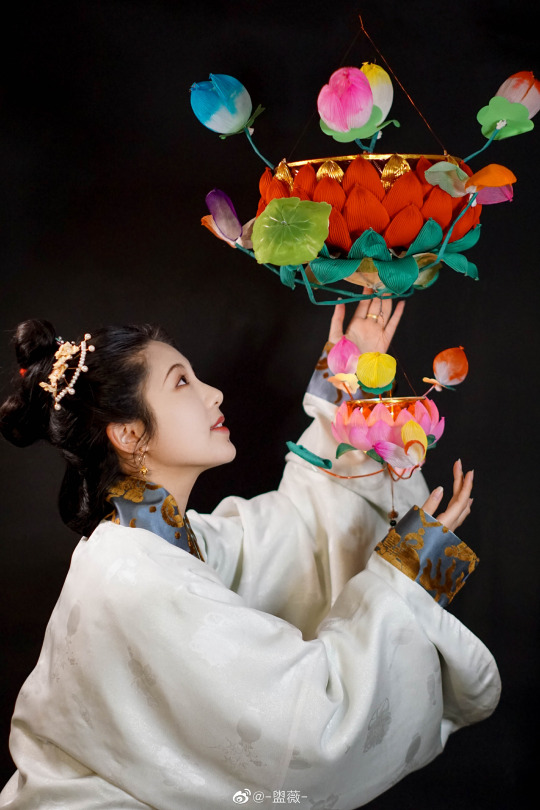
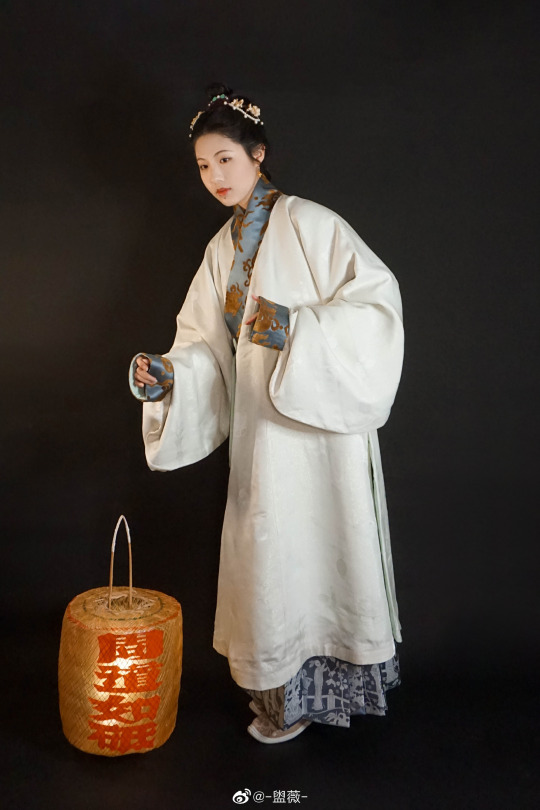

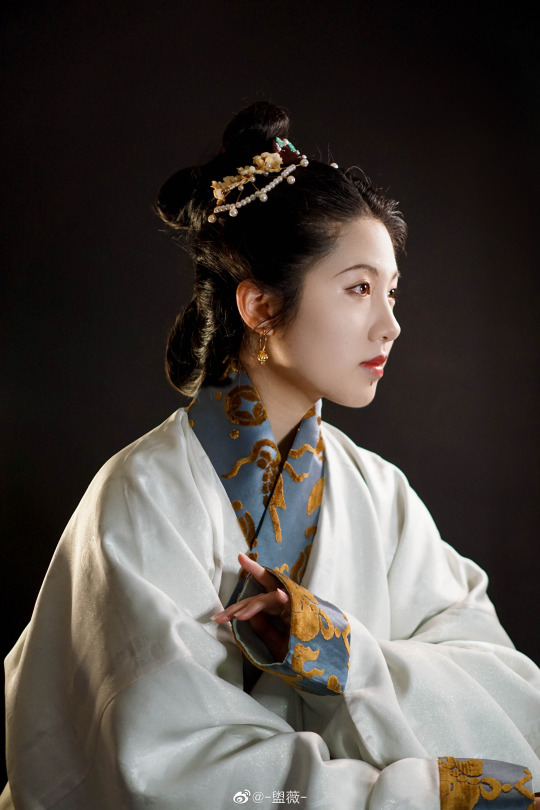
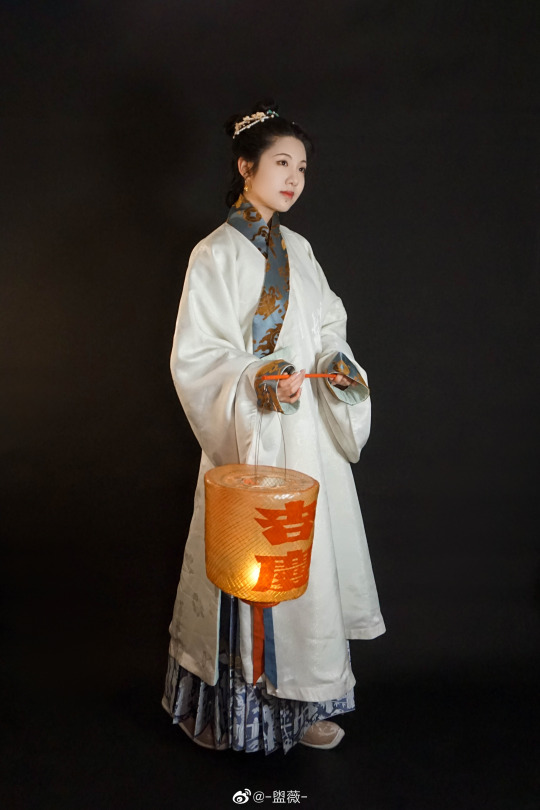
[Hanfu · 汉服]Chinese Ming Dynasty Wanli period (1573–1620 AD) Traditional Clothing Hanfu & Hairstyle Based On Ming Wanli period woodblock print painting
_______
Recreation Work:@-盥薇-
👗 Hanfu,Purse:@YUNJIN云今
🔗微博:https://weibo.com/3942003133/MrAxG2Q0q
_______
【About the Hairstyle 鬃髻(Zōng jì)】
The 鬃髻(Zōng jì) is one of the traditional Han ethnic woman hairstyles. It lasted from the Ming Dynasty to the end of the Qing Dynasty, and it still exists among Hakka(客家) elderly women.
We can see this hairstyle in the painting "《李端端图》" by Tang Yin(唐寅), a painter of the Ming Dynasty.Collection of Nanjing Museum
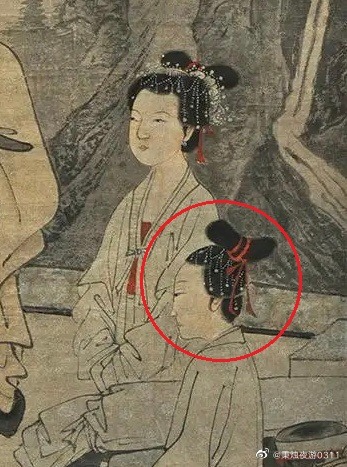
The 鬃髻(Zōng jì) can be matched with other hairstyles,like below:
Peony Head (牡丹头)+鬃髻(Zōng jì),
Ming Dynasty Green-glazed female pottery figurines,Collection of Guangdong Museum
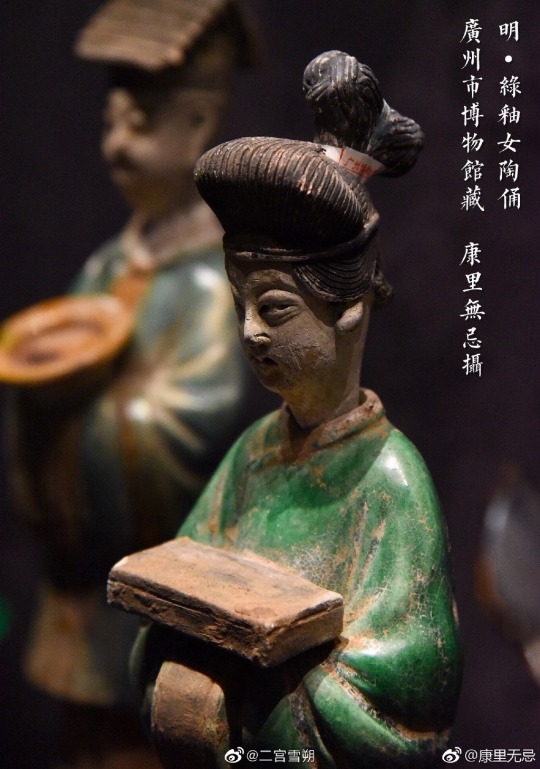
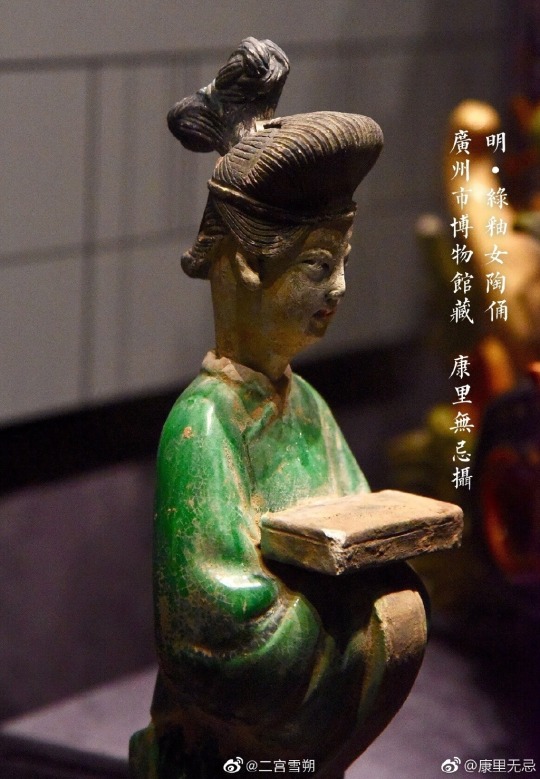
Ming Dynasty Colored Sculpture of Jellyfish Building in Jinci Temple/晋祠水母楼明代彩塑
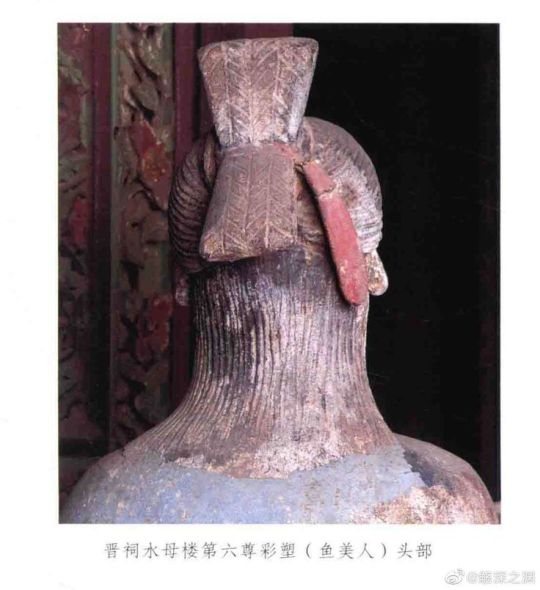
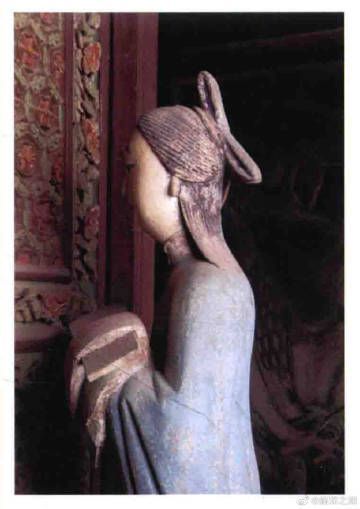
Qing Dynasty 鬃髻(Zōng jì),Qing Dynasty figurines
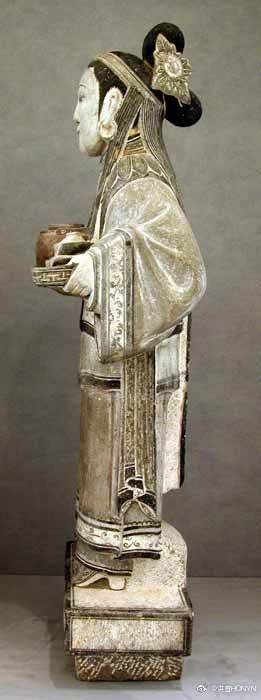
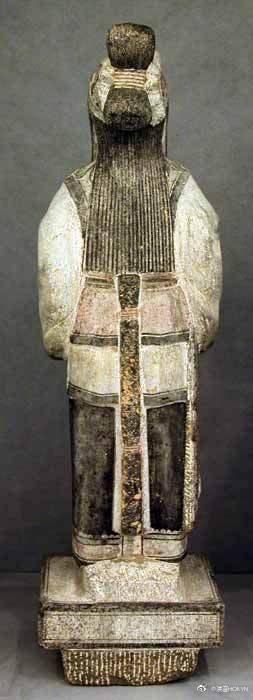
The Hakka(客家) ’s 鬃髻(Zōng jì) is divided into: 三把头(Sān bǎtóu) and 两把头 Liǎng bǎtóu)
For the most typical 三把头(Sān bǎtóu) , it divides the hair into three layers: upper, middle and lower. The part of the hair from the front of the forehead to the top of the head is called "门股(Mén gǔ)", and 门股 is divided into three parts: left, middle and right.Generally, some wigs are placed on the hair or combed the hair in reverse way to make it look fluffy.So from the front, it will have a very “full” effect of hair.
The 三把头(Sān bǎtóu) with 鬃髻(Zōng jì) of Hakka women in old photos
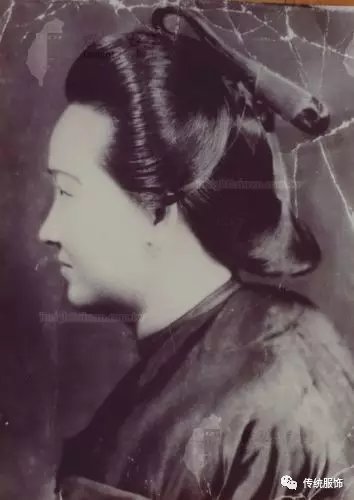
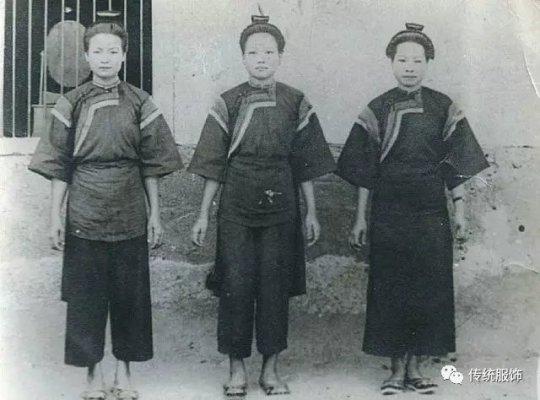
The part below the 三把头 (Sān bǎtóu) is generally called "髻尾". The upper, middle and lower parts of the hair will eventually tied together.
↓Schematic diagram in the book "Discussion on Liudui Hakka Traditional Clothing《六堆客家传统衣饰的探讨》"
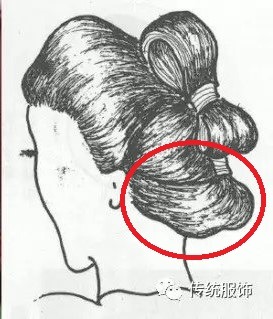
Hakka(客家) ’s 鬃髻(Zōng jì) :两把头 (Liǎng bǎtóu)
The :两把头 Liǎng bǎtóu) is the 三把头 (Sān bǎtóu) that simplifies the part of the "髻尾(The lower part)" , and divides the hair into two part,which is "门股(Mén gǔ)" and the "髻尾(The lower part). ※Some information says that 两把头 (Liǎng bǎtóu) are unmarried woman hairstyle and 三把头 (Sān bǎtóu) are married woman hairstyle, but this is not the case when looking at the photos

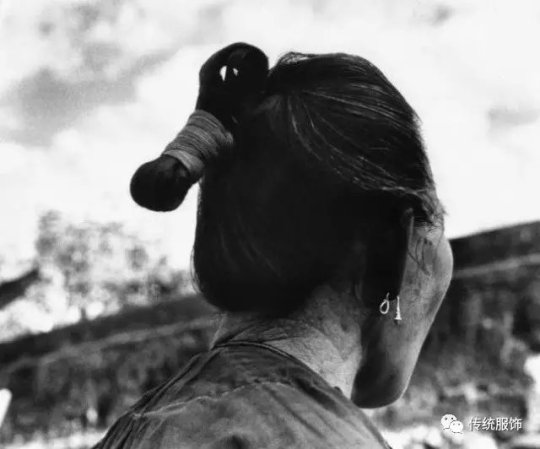

Lastly,Twho are familiar with Japanese culture may notice that above hairstyles are look similar to some hairstyles in Japan call 島田髷.But the method of divide the hair into sections, the way that make the sideburns and the shape after tied the hair together make it to a difference effect from china.
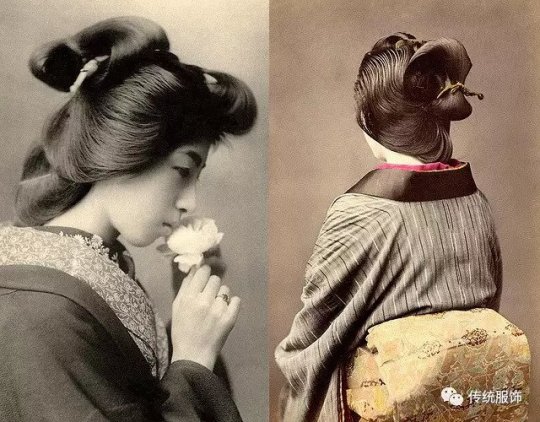
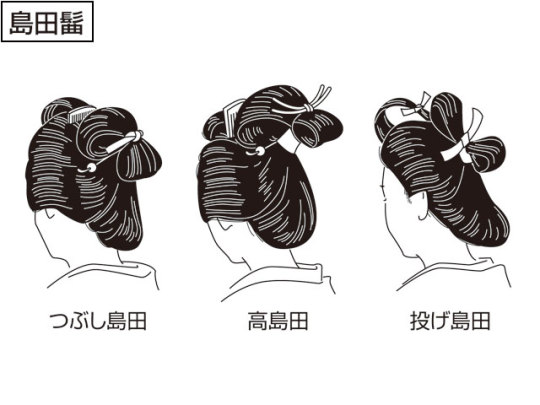
According 日本大百科全書(ニッポニカ),Japan's 島田髷 hairstyle is beginning from the 16th century of Edo period, while the China is also on late Ming period(※usually refers to from the beginning of Wanli (1573) to the end of Chongzhen (1644)).
Not sure if there is a connection between the japan and china. I will update if there is more information.
(Please correct me if I'm wrong🙏)
#Chinese Hanfu#Ming Dynasty#Wanli period (1573–1620 AD)#hanfu#Ming Wanli period woodblock print painting#hanfu history#chinese historical fashion#chinese historical hairstyle#chinese history#chinese traditional clothing#鬃髻(Zōng jì)#两把头 (Liǎng bǎtóu)#三把头 (Sān bǎtóu)#China#Japan#島田髷#Hakka(客家)#Qing Dynasty#recreation#chinese art#-盥薇-#YUNJIN云今#Peony Head (牡丹头)
233 notes
·
View notes
Photo


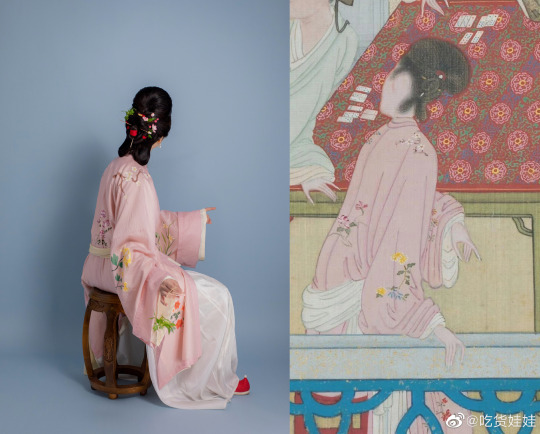
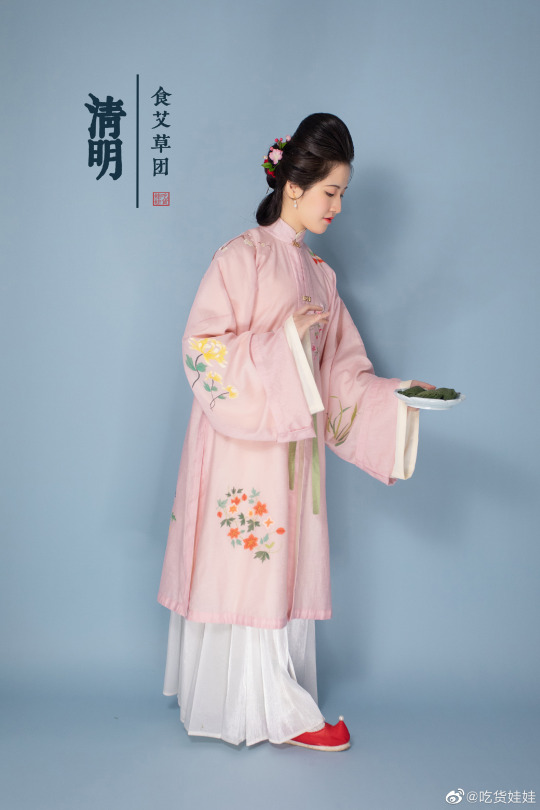



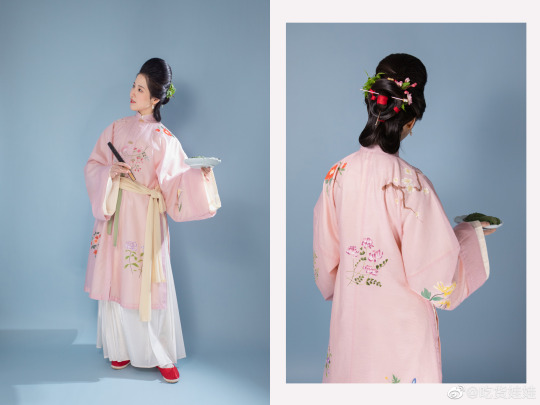
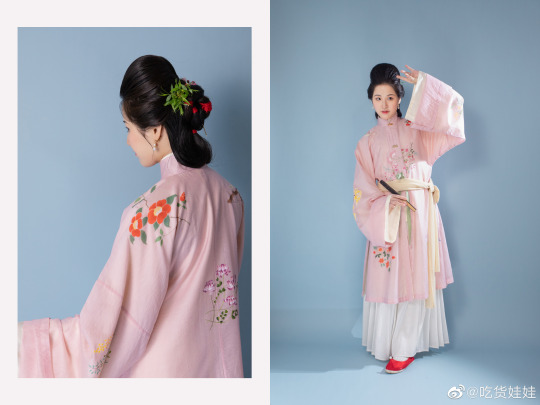
[Hanfu · 漢服]Chinese Early Qing Dynasty Traditional Clothing & Qingming Festival/清明節
————————
Han ethnic Women's attire & Hairstyle ”Peony Head (牡丹头) in the Early Qing Dynasty
Han ethnic Women's attire and hairstyle in the early Qing Dynasty was not like men that force to change by the Qing government. Women's attire and hairstyle were not particularly different from late Ming Dynasty.
————————
【Qingming Festival/清明節】
The Qingming festival or Ching Ming Festival,also known as Tomb-Sweeping Day in English (sometimes also called Chinese Memorial Day, Ancestors' Day, the Clear Brightness Festival, or the Pure Brightness Festival), is a traditional Chinese festival observed by ethnic Chinese in mainland China, Hong Kong, Macau, Taiwan, Malaysia, Singapore, Cambodia, Indonesia, Philippines, Thailand, and Vietnam.
During Qingming, Chinese families visit the tombs of their ancestors to clean the gravesites and make ritual offerings to their ancestors. Offerings would typically include traditional food dishes and the burning of joss sticks and joss paper.The holiday recognizes the traditional reverence of one's ancestors in Chinese culture.
The origins of the Qingming Festival go back more than 2500 years, although the observance has changed significantly. It became a public holiday in mainland China in 2008, where it is associated with the consumption of qingtuan,green dumplings made of glutinous rice and Chinese mugwort or barley grass.
--------
【Qingming Festival Customs: 插柳/戴柳 put willow/wearing willow 】
“清明不插柳,红颜变皓首”:
As the saying goes, it means in Qingming Festival, in the first ten days of March of the lunisolar calendar every year, is the day when traditional customs go to graves to worship ancestors. According to the old custom, when returning from worshiping ancestors during the Qingming Festival, people have to break off willow branches and wear them on head.It is said that if people don’t do this, young people will become old people with white hair.
According to the "Qing Jialu/清嘉录" written by Gu Lu of the Qing Dynasty:
「清明日,滿街叫賣楊柳,人家買之插於門上,農人以插柳日晴雨佔水旱,若雨,主水。」
every Qingming Festival, "willows are sold all over the street, and people buy them and put them on the door.
Q:why wearing willow or put willow on the door?
Jia Sixie(贾思勰)of the Northern Wei Dynasty(386-535) said in "Qi Min Yao Shu/齐民要术": “取柳枝著户上,百鬼不入家。”
“Take the willow and put it on the door/house, and a hundred ghosts will not enter the house”
It is said that a hundred spirits come out on Qingming Festival, and people need to worship their ancestors while carefully keep a certain distance from other spirits and keep them out of house. Willow has become a weapon for people to avoid evil spirits and protect people from them.
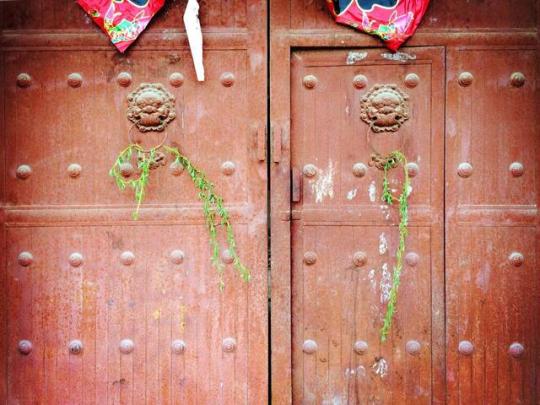
The custom is still widespread in parts of China especially Wudi(吴地) area: area in the south of the Yangtze River
----
In ancient times, there were many interesting Qingming Festival customs. Apart from visit the tombs of their ancestors to clean the gravesites and make ritual offerings to their ancestors, there were also a series of custom sports activities such as spring outing, swinging, Cuju (蹴鞠:is an ancient Chinese ball game) , playing polo etc.
_______
🧚🏻Recreation Work:@吃货娃娃
🔗Weibo:https://weibo.com/1868003212/MAyid6Mtv
_______
#Chinese Hanfu#hanfu#early qing dynasty#Ming Dynasty#Late Ming Period#Qingming Festival/清明節#Chinese Culture#chinese customs#hanfu accessories#chinese traditional clothing#chinese#chinese historical fashion#historical fashion#吃货娃娃#插柳/戴柳
147 notes
·
View notes
Photo

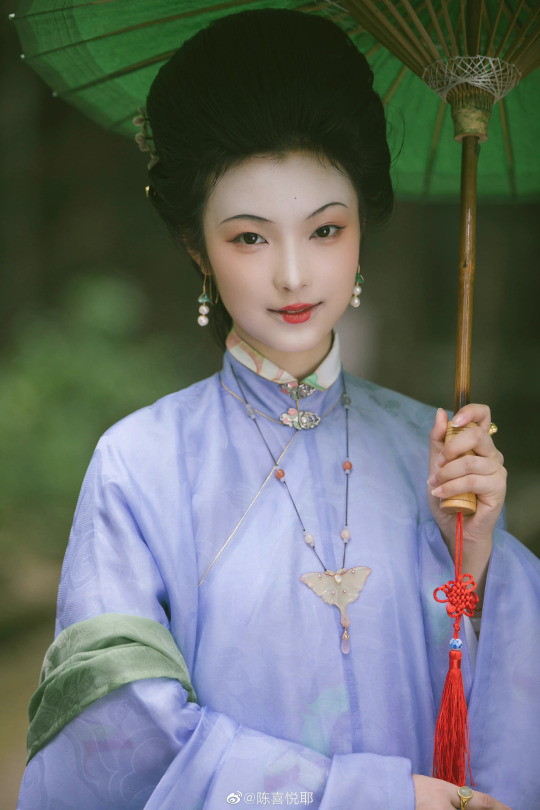
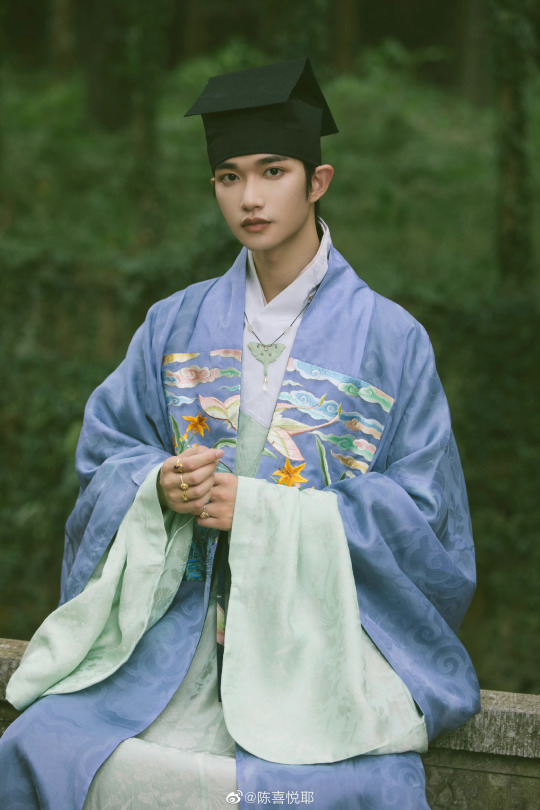
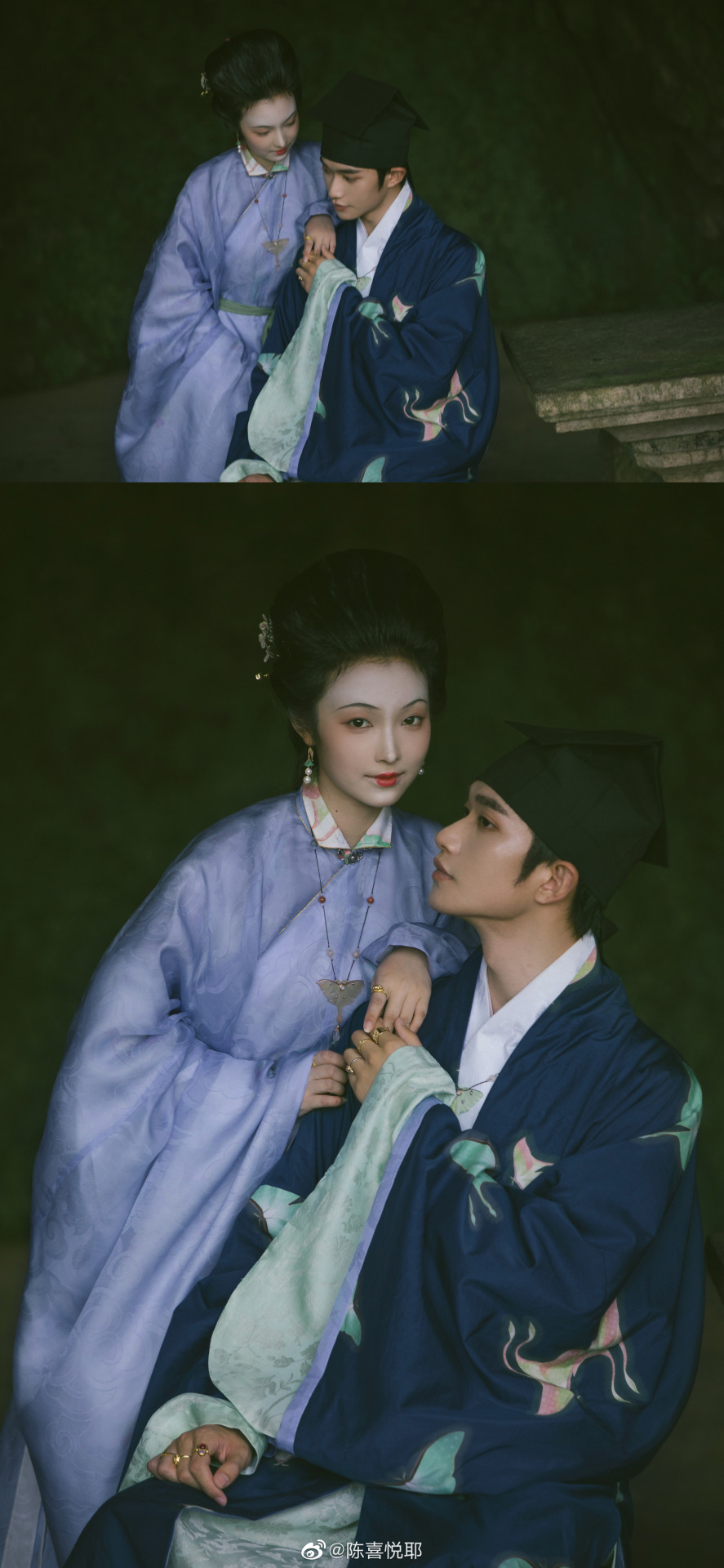
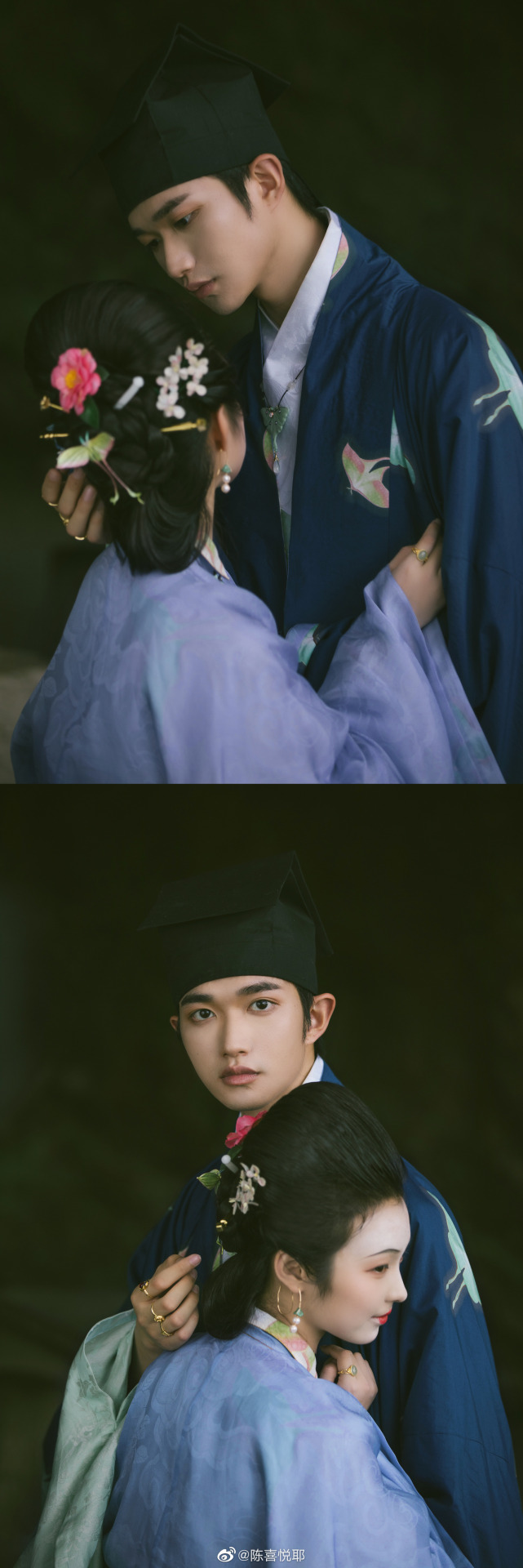
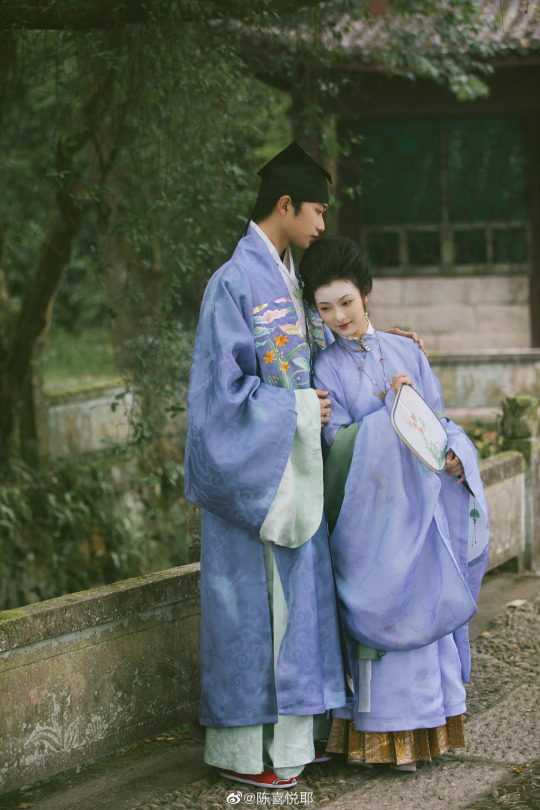
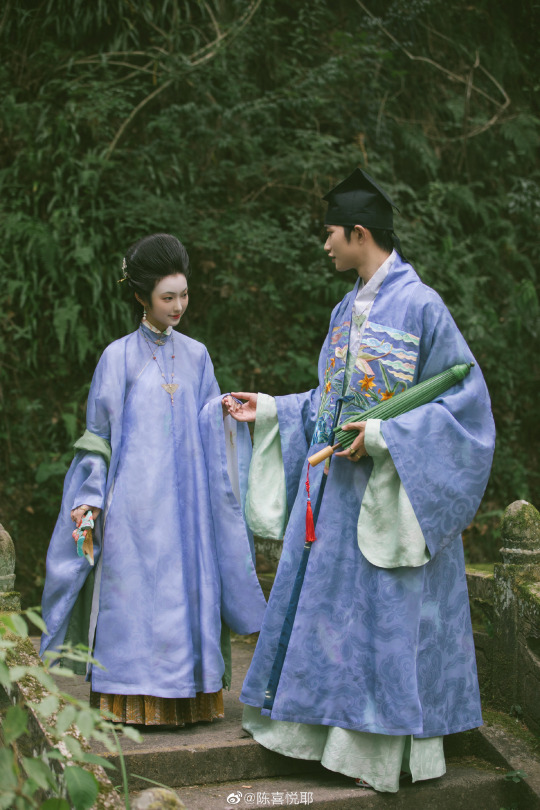

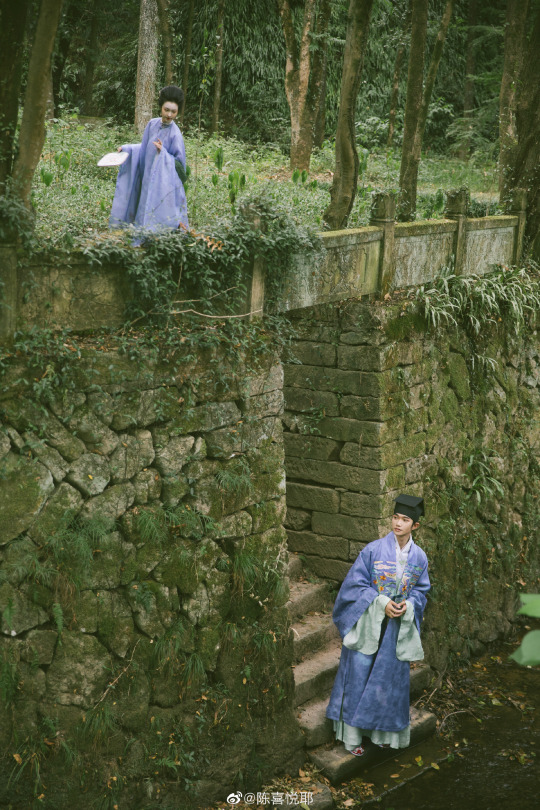

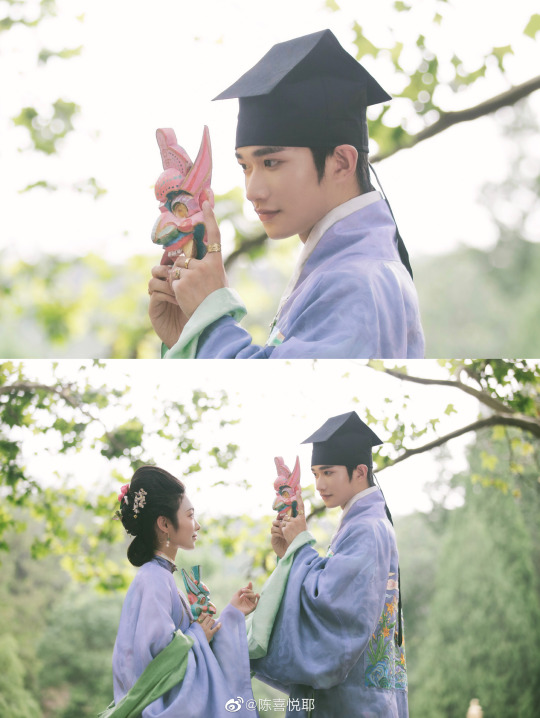
【Reference Artifacts】:
・ Ming Dynasty Woodblock Print Painting: showing woman in Hairstyle ”Peony Head (牡丹头)”


・Ming Dynasty Portrait:
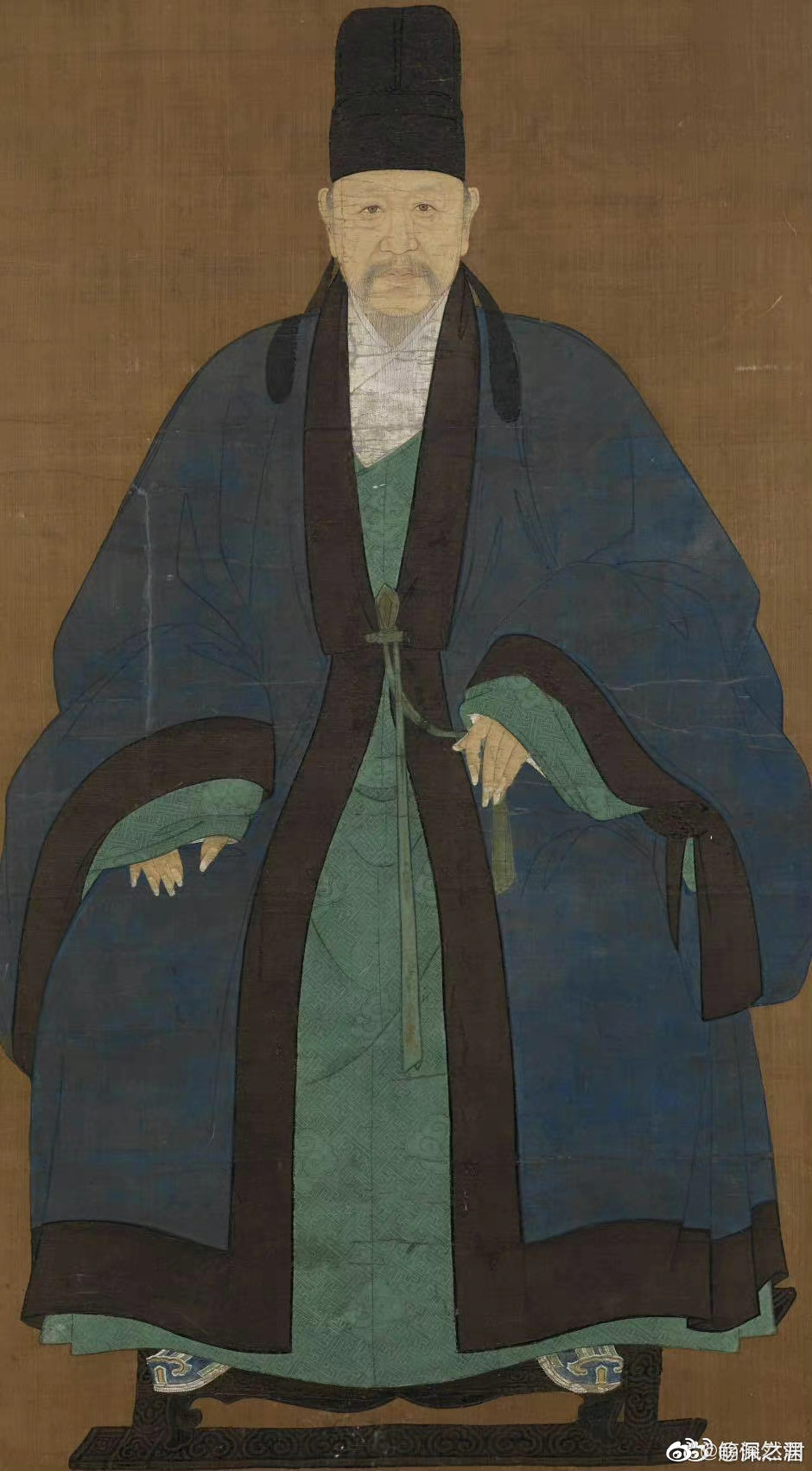
・Ming Dynasty Hanfu Relics: < 蓝色织金麒麟方补棉袍 >The old collection of the Confucius Family, Shandong Museum Collection

[Hanfu · 漢服]China Ming Dynasty Chinese Traditional Clothing Hanfu Photoshoots-【Late Ming Peirod】
—诸夫子,因何缘由来此?— — 寻一故人—
_______
📸Photo: @镧商商商
👗Hanfu: @YUNJIN云今
🧚🏻 Model: @陈喜悦耶 & @夫诸Fzz
💄 Makeup:@嘿那个谁–夙夕
🔗Weibo:https://weibo.com/6425876323/M7SlGAWt8
_______
#Chinese Hanfu#hanfu#hanfu history#hanfu accessories#hanfu art#hanfu fashion#chinese#chinese traditional clothing#chinese coustume#Chinese Culture#chinese fashion history#chinese art#chinese hanfu relics#Ming Dynasty Portraits#Ming Dynasty Woodblock Print Painting#chinese history#historical clothing#historical fashion#historical costuming#historical hairstyles#Hanfu From China#蓝色织金麒麟方补棉袍#镧商商商#YUNJIN云今#陈喜悦耶#夫诸Fzzv#嘿那个谁–夙夕#changshan#Peony Head (牡丹头)
113 notes
·
View notes